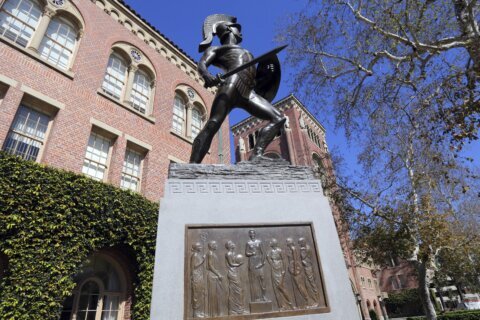Aside from buying a house, paying for college can be one of the biggest investments many Americans make. According to College Board, the average cost to attend an in-state four-year public college was $9,970 for the 2017-18 school year. That one-year cost is up 3.1 percent from the year before. And the costs are only rising.
Although financial aid, including scholarships, grants and federal student loans, can offer low- or no-cost ways to pay for a degree, private student loans can bridge the gap between student aid and the actual cost of attending school. But even though these private loans could come through when you need them, they may have significant drawbacks.
Here’s what you need to know about the pros and cons of private student loans before signing on the dotted line.
Federal vs. Private Student Loans
There are two major types of student loans to choose from: federal student loans, which are issued through the U.S. Department of Education, and private student loans, which are offered by individual financial institutions.
Federal student loans are considered a type of financial aid. In order to qualify for federal loans, you have to fill out the Free Application for Federal Student Aid, or FAFSA, each year. However, unlike with scholarships and grants, you have to pay back federal student loans — with interest.
The good news is there is no credit check required to borrow federal student loans. Additionally, because they’re issued by the government, the interest rates, fees, and other terms and conditions are set by the law and are the same for all borrowers.
Private student loans work differently. “Private loans are simply loans from private lenders — such as banks — that can be used to pay educational expenses,” says Ryan W. McMaken, communications director and economist for the Mises Institute, a free-market educational institution.
[Read: Best Student Loans Without a Co-Signer.]
Since private student loans are issued by banks, credit unions and other lenders, you’ll need to meet certain eligibility requirements in order to be approved, which vary by each institution. In general, though, you need a good credit score or a co-signer with good credit to take out private loans.
Advantages of Private Student Loans
Why would a student loan borrower opt for private loans over federal loans? There are a few advantages. With private loans, you can:
Fill the financing gap. There are caps on how much borrowers can take out in federal student loans each year, as well as aggregate loan limits for undergraduate and graduate study. For example, a first-year undergraduate student who is considered a dependent can take out no more than $5,500 in federal student loans per school year, with a maximum of $3,500 in subsidized loans.
However, if the cost of tuition is more than a student qualifies to borrow in federal loans, he or she will need a way to cover the difference. Private loans are often used to fill any gaps in financing once federal loan options are exhausted.
“Many (students) take out private student loans when they will still struggle to pay their tuition even after federal student loans,” says Leslie Tayne, debt resolution attorney, best-selling author and founder of Tayne Law Group.
Take advantage of more flexible borrowing options. McMaken says that the application process is sometimes more flexible for private student loans than for federal loans. For one, there’s no need to fill out a FAFSA; private student loans aren’t based on need. Anyone who meets credit, income and any other qualifications can borrow private loans.
Most private lenders also offer variable interest rates in addition to fixed rates. Federal student loans, on the other hand, only offer fixed interest rates. Variable interest rates can be helpful for borrowers who are looking to save money on interest up front, though the rate could rise in the future.
Get lower interest rates — sometimes. Since private student loan interest rates are based on the creditworthiness of the borrower and/or co-signer — and not set by the government — it’s possible to qualify for a lower interest rate, says Tayne.
[Read: Best Private Student Loans.]
For example, the interest rate for undergraduate direct subsidized federal loans disbursed between July 1, 2018, and July 1, 2019, is 5.05 percent. However, some private lenders advertise rates as low as around 4 percent. For borrowers who have great credit or who are able to enlist a highly qualified co-signer, private loans could be a more cost-effective borrowing option.
Reasons to Avoid Private Student Loans
Even though there are some upsides to private student loans, they do come with major risks. Here’s what borrowers should know before making the decision to take out private loans.
Good credit is required. Even though it’s possible to qualify for a low interest rate on a private student loan, many borrowers won’t be able to get a loan on their own.
Borrowers who don’t meet the highest credit standards may pay higher interest rates. Considering young student borrowers may have a limited credit history and unstable income, that leaves a large pool of borrowers who will end up paying higher interest rates than federal borrowers — possibly in the double digits.
Opting for a variable rate might not save you money. If you choose a private student loan with a variable interest rate, there’s always the possibility that the rate will increase over time. In fact, rates are currently on the rise and expected to continue going up for the next couple of years. So borrowers counting on a low variable interest rate now might be surprised by higher payments down the road.
Fewer repayment and forgiveness options. If federal student loan borrowers encounter financial trouble and aren’t able to make their monthly payments, there are several government-backed programs they can pursue to make their debt more affordable. For example, federal student loan borrowers can apply for an income-driven repayment plan, which adjusts payments to 10 to 20 percent of their income, depending on the particular program. IDR plans also forgive any remaining debt after 20 to 25 years of qualifying repayment.
There are also federal student loan forgiveness programs available to qualified borrowers who pursue careers in public service that will wipe away their debt after they make enough qualifying payments.
[Read: Best Student Loan Consolidation Lenders.]
Private borrowers, on the other hand, are rarely so lucky. Student loan repayment assistance is not typically offered by private lenders, and it’s up to lenders whether they want to work out some sort of alternative repayment plan with a struggling borrower. “If a borrower becomes delinquent with private loans, there may be fewer options than when a government loan borrower is delinquent,” McMaken says. “This can lead to the borrower’s credit being dinged or destroyed more quickly than might be the case with government loans.”
Should You Take Out Private Student Loans?
Maybe the disadvantages of private student loans outweigh the benefits for you. If that’s the case, focus on federal loans if you need to borrow money for school. However, if you think a private student loan could be a helpful tool to get the financing you need for college, follow these important steps for choosing the right one.
Use it as a last resort. “You should really only turn to private student loans if federal student loans will not cover your tuition expenses enough and you’ve exhausted your other options,” Tayne said. Those options include scholarships, grants and work-study jobs, which can minimize the amount of loans you need to borrow. Only turn to a private loan once you’ve taken advantage of all federal aid available to you.
Do your research. The great thing about private student loans is there are a variety of options to choose from. However, that also means there’s a wide range of rates, fees and terms — and not all are good for your bottom line. “Compare interest rates and fees on the loan, as well as the borrower protections that the lender will offer you,” Tayne says. Make a decision once you’ve compared several options and identified the most affordable offer.
Look online. Some of the best private student loan companies exist online. Because these institutions operate via the web, they may have less overhead than brick-and-mortar lenders and could pass those savings on to customers in the form of lower interest rates and fees.
Minimize the amount you borrow. “Unfortunately, those who take out loans often overestimate their incomes after graduation,” McMaken says. “This can lead to a number of problems down the line.” To ensure you aren’t stuck with a mountain of debt after college, only borrow what you absolutely need and stick to a budget while you’re in school. That’s especially true for private loans, which could be limited on repayment or forgiveness options if you run into financial trouble.
Tackle your debt ASAP. Unlike federal student loans, which typically don’t require payments until six months after you graduate, some private loans begin accruing interest as soon as they’re disbursed. That means you should prioritize paying them off as soon as possible.
“Private student loans often allow for early repayment without penalty. Therefore, if you do choose to take out a private student loan, you can start paying off your loans while you’re in school,” according to Tayne. This, she says, means you can decrease how much you pay in the long run by saving on interest.
More from U.S. News
Can You Settle Student Loan Debt?
What Is a Student Loan Servicer?
How Do Peer-to-Peer Loans Work? The Complete Guide
Pros and Cons of Private Student Loans originally appeared on usnews.com







